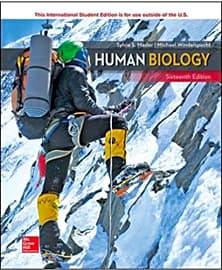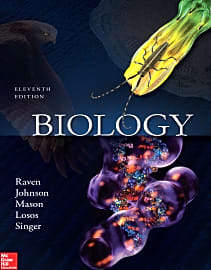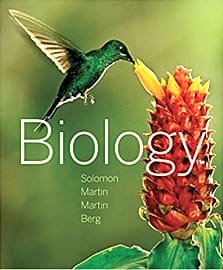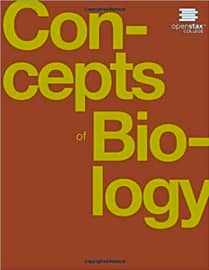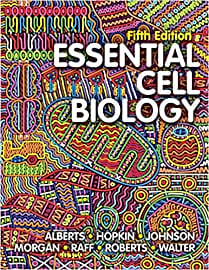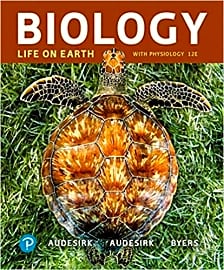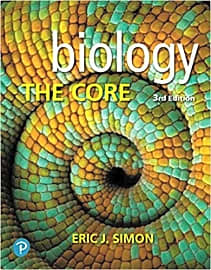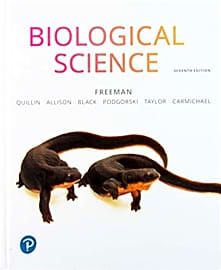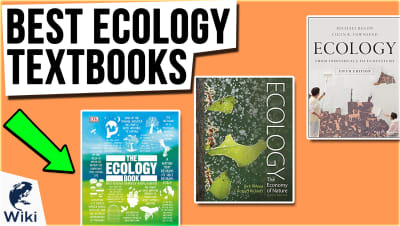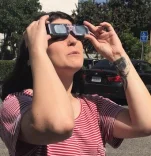The 10 Best Biology Textbooks


This wiki has been updated 37 times since it was first published in July of 2015. Studying the sciences can be challenging, but rewarding, as well, if you enhance your learning with the right materials, such as these informative biology textbooks. We've included editions specifically written for high school students, undergraduates, and graduates pursuing a professional career in the field, as well as for laypersons with an interest in the subject. When users buy our independently chosen editorial picks, we may earn commissions to help fund the Wiki.
Editor's Notes
July 10, 2020:
Not too much has changed in this category since our last update, but we naturally ensured every selection was in its latest iteration, which meant updating Essential Cell Biology to the fifth edition and Biology: Life on Earth with Physiology to the twelfth. If you're looking for more titles akin to Essential Cell Biology, check out our list of microbiology textbooks.
After realizing that we had a fair few college-oriented introductory tomes on this list, we decided to say goodbye to "Biology" by Sylvia S. Mader to make room for a text geared toward high school students. Must Know High School Biology isn't dry or inaccessible like many other textbooks, especially high school ones, tend to be. Instead, it's written in a lively, relatable way and imparts the need-to-know information required to pass exams and get a good grade. This slim book is a solid supplement to whatever volume the teacher is using in class to help shine a light on topics that can be troublesome. It's all about helping to fast-track the learning process for students who are struggling, so it's inadvisable to pick up if you're looking to challenge a teen who is already excelling.
Campbell Biology remains a top choice for serious students who want to get a deeper understanding and crave numerous resources to engage in for hands-on learning. If you're taking an introductory course and it's not your major, Concepts of Biology or Biological Science should get you up to speed on the foundations.
July 08, 2019:
This list has been overhauled to showcase the most up to date editions of select textbooks. You'll find that Biology: The Core, Pearson Biological Science, Biology: Life on Earth with Physiology, Human Biology 16th Edition, and "Biology" by Sylvia S. Mader have all been brought to the current iteration. We also decided to scrap The Essentials 2nd Edition, an introductory text that seemed remedial at times in favor of Concepts of Biology, a much more compelling selection that still covers the fundamentals in a concise and clear manner.
Biology is a broad science, and so in addition to respected titles in the vein of Campbell Biology and comprehensive tomes such as "Biology" by Sylvia S. Mader, Biology 11th Edition, and Cengage Biology, we also homed in on specialties with Essential Cell Biology and Human Biology 16th Edition.
Biology: Life on Earth with Physiology is particularly helpful for those who need to relate the sciences to real-world scenarios, while Pearson Biological Science and Biology: The Core are ideal for students who need something that gets straight to the point.
Every item on this list is packed with pedagogical tools and broken down into straightforward layouts. Many also have additional resources available online.
Special Honors
The American Institute of Biological Sciences The American Institute of Biological Sciences is a nonprofit association dedicated to advancing knowledge of the biological sciences in society. Their mission is to promote the use of scientific information to inform decision-making and advance the field. They provide community programs, research funding, and up-to-date peer-reviewed research, news, and analysis to professionals, students, educators, and the public. aibs.org
Eguruba Biology Quiz App Available for both Apple and Android devices, the Biology Quiz App is intended to serve as a study tool for advanced high school and college-level students of biology. It features twelve topics that include the cell, respiration and photosynthesis, biochemistry, and more. Each chapter is made up entirely of quiz questions, helping to reinforce what learners already know and isolate areas for improvement. Every question is accompanied by a brief explanation. eguruba.com
Brief History Of Biology
Botany is one of the earlier biological studies to experience popular interest and research as it was closely linked with medical practices.
Biology can trace its beginnings all the way back to the 5th century B.C.E. when Alcmaeon of Croton made the first significant contribution. He is the first known scientist to practice dissection in his studies. He didn't actually have an anatomical goal, but is credited with making first scientific discoveries in the field.
Biological sciences today have drawn from numerous traditions and practices dating back to antiquity, such as the practice of medicine, which started with ancient Greeks like Hippocrates, and the tradition of natural history, which dates back to Aristotle. In 300 B.C.E., Theophrastus can be said to have started botany when he attempted to classify plants and describe their structures, habits, and uses.
Botany is one of the earlier biological studies to experience popular interest and research as it was closely linked with medical practices. Along with medicine, botany was vital in the study of natural history and is considered one of the earliest points of common focus between the two areas. In the Middle Ages and the Renaissance Era, it was often commonplace to see gardens maintained at centers of medical instruction with the professors not only caring for the gardens, but being experts of botany as well.
In 1543, Andreas Vesalius researched anatomy by performing detailed dissections on human cadavers, which was unusual at the time as most anatomists were only dissecting animals. He published a seven volume atlas of human anatomy called the De Humani Corporis Fabrica that covered both muscular and skeletal anatomy and the body's major organ systems. In the 16th century, physiology began to flourish as well, but knowledge in this area didn't start accumulating rapidly until the 19th century with the appearance of cell theory.
By the 1900s many of these different areas of study were overlapping and the concept of biology as a single coherent field of study began to emerge.
Etymology Of The Word Biology
The word biology comes from combining two Greek words, βίος, translated as bios, which means life, and the suffix λέγειν, which can be roughly translated as -logy and means the study of, or science of. Thus, when combined it can mean the study of life or the science of life.
There is some debate as to the first use of the word biology. It is often cited as being coined either by Thomas Beddoes in 1799 or Karl Burdach in 1800, but there is also documented use of it in Volume 3 of Michael Christoph Hanow's Philosophiae naturalis sive physicae dogmaticae: Geologia, biologia, phytologia generalis et dendrologia, which was published in 1766 and in its Latin form, bilogi, in Swedish scientist Carl Linnaeus' Bibliotheca botanica, published in 1736.
Tips For Reading A Textbook
Textbooks aren't like regular books that tell a story, rather they are designed to teach and inform. As such, a textbook shouldn't be read from front to back like a regular book. Instead the best strategy is to follow a preview, read, review format for each chapter. Don't worry about spoiling the ending, textbooks don't lead up to some climactic surprise as mystery thrillers do.
The trick to doing this is not to stop and take notes or highlight as you read, but rather to do it at the end of each page or after a couple of paragraphs.
The preview step is designed to give you a broad overview of what you will be reading about, and the major topics or concepts you will be learning. To preview a textbook effectively, you will want to start at the very end of the chapter with the quiz questions. Try and answer them as best you can before you start reading the chapter. This will give you a breakdown of exactly what you should hope to learn in your readings and also make those key points stand out in your mind later when you are going through the chapter. Next, read the chapter's final summary, which will give you a background of the main ideas that will be covered. Finally go back and browse all of the headings and subdivisions of the chapter.
Now you can move on to reading the chapter. This should be active reading, unlike reading a story book, which is passive reading. In active reading you will take notes, ask questions, and highlight key points. The trick to doing this is not to stop and take notes or highlight as you read, but rather to do it at the end of each page or after a couple of paragraphs. Stopping as you read will break up your flow. You may also highlight the wrong key point as you highlight something that seems important and then a few sentences later you read something that is even more vital. If you highlight everything that seems important as you go, you will probably wind up with too much highlighted material, making browsing your notes harder.
Writing questions about key concepts along the margins or on post-its after you read each page is a great way to set yourself up for later testing. Once you finish the chapter or a large section of it, you can go back and take a look at the questions. If you can answer them without having to reference the text, then you know you have a grasp on your readings.
The final review step is just to ensure you have understood everything. Start by writing your own summary of the information in the chapter. This ensures you can expound on what you have learned and recall it for later use. Then move onto the chapter's review questions you started with and see how many you can answer correctly. If there are questions you can't answer, go back and study up on those areas.


